Search
Search Results
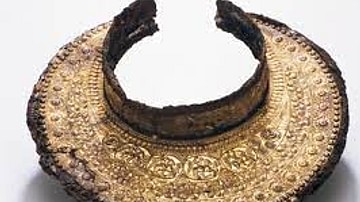
Image
Iron Peritrachelion (gorget) from Macedonian Tomb II of Vergina
Iron peritrachelion (gorget) with golden-silver decorative plate found in Macedonian Tomb II of Vergina, Imathia, Central Macedonia, Greece. The tomb is dated to between the end of the 4th century BCE and the beginning of the 3rd century...
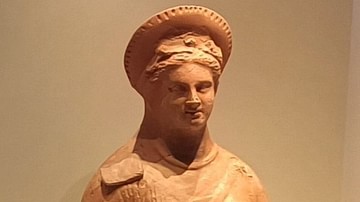
Image
Terracotta Bust of a Macedonian Goddess or Princess from Pella
Terracotta bust of a Macedonian goddess or princess from Pella, found in the Agora, dating from the 4th century BCE. Archaeological Museum of Pella. In stark contrast to the limited view of women offered in ancient writings about Macedonia...
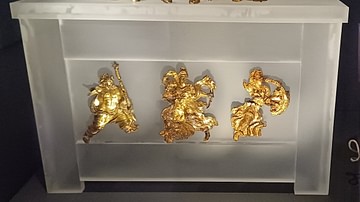
Image
Macedonian Burial Casket Decorations from Pydna
Grave goods from a male burial in the necropolis of Pydna, c. 330 BCE. Archaeological Museum of Thessaloniki, acc. no. Py4285. The ancient city of Pydna (near today's small town of Makrygialos) was a semi-independent harbour by the Thermaic...

Definition
Herakleia Lynkestis
Herakleia Lynkestis (Heraclea Lyncestis; Ἡράκλεια Λυγκηστίς) was a city in the ancient kingdom of Macedon not far from modern Bitola, founded c. 358 BCE by Philip II of Macedon (r. 359-336 BCE) as a governing centre for his new expansions...

Definition
Alexander the Great
Alexander III of Macedon, better known as Alexander the Great (l. 21 July 356 BCE – 10 or 11 June 323 BCE, r. 336-323 BCE), was the son of King Philip II of Macedon (r. 359-336 BCE) who became king upon his father's death in 336 BCE and then...
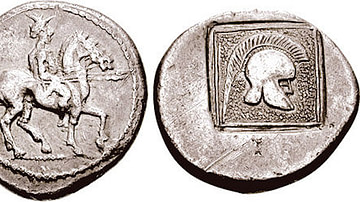
Definition
Alexander I the Philhellene
Alexander I of Macedon, also known as Alexander I the Philhellene ('friend of the Greeks') or 'The Wealthy', was king of ancient Macedon from around 498 to 454 BCE. He is known for the role he played in the second Persian invasion of Greece...
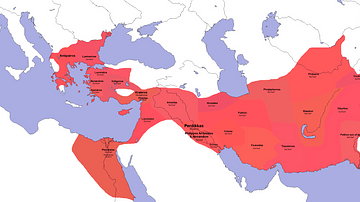
Image
Satrapies in the Macedonian Empire
A map showing the distribution of satrapies in the Macedonian empire after the Settlement in Babylon summer/fall 323 BC.

Image
Macedonian Gold Stater
Macedonian gold stater from the reign of Philip II, 359-356 BCE. O: Head of Apollo. R: Charioteer driving a racing biga.
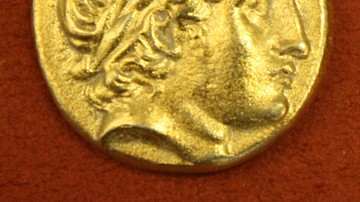
Image
Apollo, Macedonian Gold Stater
Macedonian gold stater, 359-336 BCE.
Obverse: Apollo
Reverse: Charioteer
Alpha Bank Numismatics Collection, Kerkyra, Corfu.
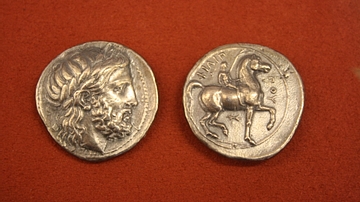
Image
Philip II, Macedonian Silver Tetradrachm
Macedonian silver tetradrachm from the reign of Philip II, 359-336 BCE. O: Head of Zeus. R: Horseman carrying a palm branch.